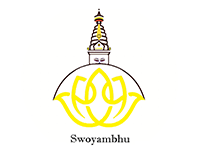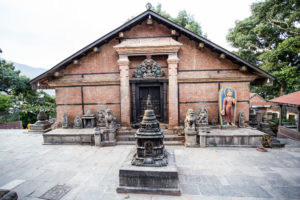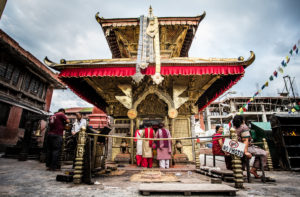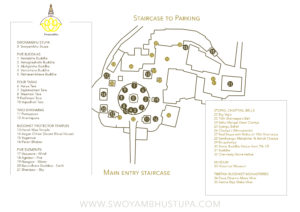HISTORY OF
swoyambhu STUPA
A golden spire crowning a conical wooded hill, Swoyambhu Stupa is the most ancient and enigmatic of all the holy shrines in Kathmandu valley. Its lofty white dome and glittering golden spire are visible for miles and from all sides of the valley.
Historical records inscribed on stones around the stupa prove that it had already been an important Buddhist pilgrimage destination by the 5th century AD. Its origin, however, is dated to a much earlier time, long before the arrival of Buddhism in the valley.
THE LEGEND
The 15th-century Swoyambhu Purana legend, speaks of a miraculous lotus, planted by a past Buddha, which blossomed from the lake that once covered Kathmandu valley. The lotus mysteriously radiated a brilliant light, and the name of the place came to be Swoyambhu, meaning ‘Self-Created or Self-Existent’. Saints, sages, and divinities traveled to the lake to venerate this miraculous light for its power in granting enlightenment.
During this time, the Bodhisatva Manjushri was meditating at the sacred mountain of Wu Tai Shan and had a vision of the dazzling Swoyambhu light. Manjushri flew across the mountains of China and Tibet upon his blue lion to worship the lotus. Deeply impressed by the power of the radiant light, Manjushri felt that if the water drained out of the lake, Swoyambhu would become more easily accessible to human pilgrims. So with his great sword, Manjushri cut a gorge in the mountains surrounding the lake. The water, draining away, left the valley of present-day Kathmandu. The lotus then transformed into a hill as the light became Swoyambhu Stupa.
THE PRAYERS OF SWOYAMBHU
The worshippers of Swoyambhu Stupa include Hindus, Vajrayana Buddhists of northern Nepal and Tibet, and the Newars of central and southern Nepal.
Every morning before dawn, hundreds of pilgrims ascend the 365 steps that lead up the hill. They go past the gilded Vajra(Tibetan: Dorje) with two lions guarding the entrance and begin a series of clockwise circumambulations around the stupa.
Every four sides of the main stupa have a pair of big eyes. These eyes are symbolic of God’s all-seeing perspective. There is no nose between the eyes but rather a representation of the number one in the Nepali alphabet. It signifies that the single way to enlightenment is through the path of Buddhism. Above each pair of eyes is the third eye, enlighting the wisdom of looking from within. No ears are present because they say the Buddha is not interested in hearing praise for him. The disciplines of Buddhism teach that one must help others regardless of the praise one receives after accomplishment.
THE SURROUNDING
The stupa has many chaityas, temples, painted images of deities, and numerous other religious objects around its surrounding. There are many small shrines with statues of Tantric and Shamanistic Deities, prayer wheels for the Tibetan Buddhists, Buddhist chaityas, and decorated with the faces of the Dhyani Buddhas.
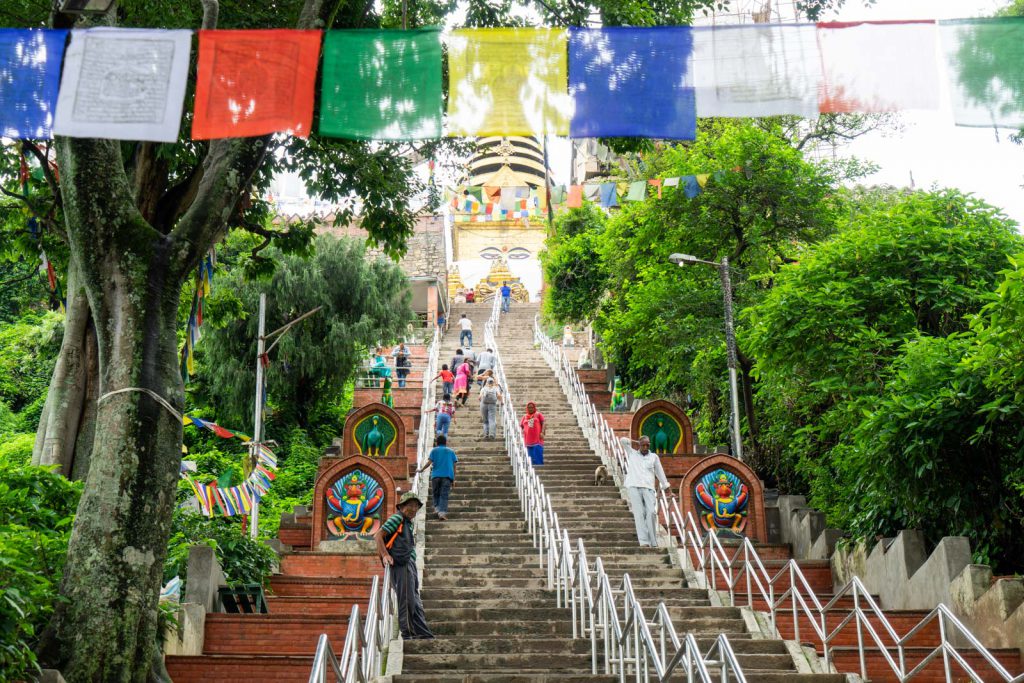
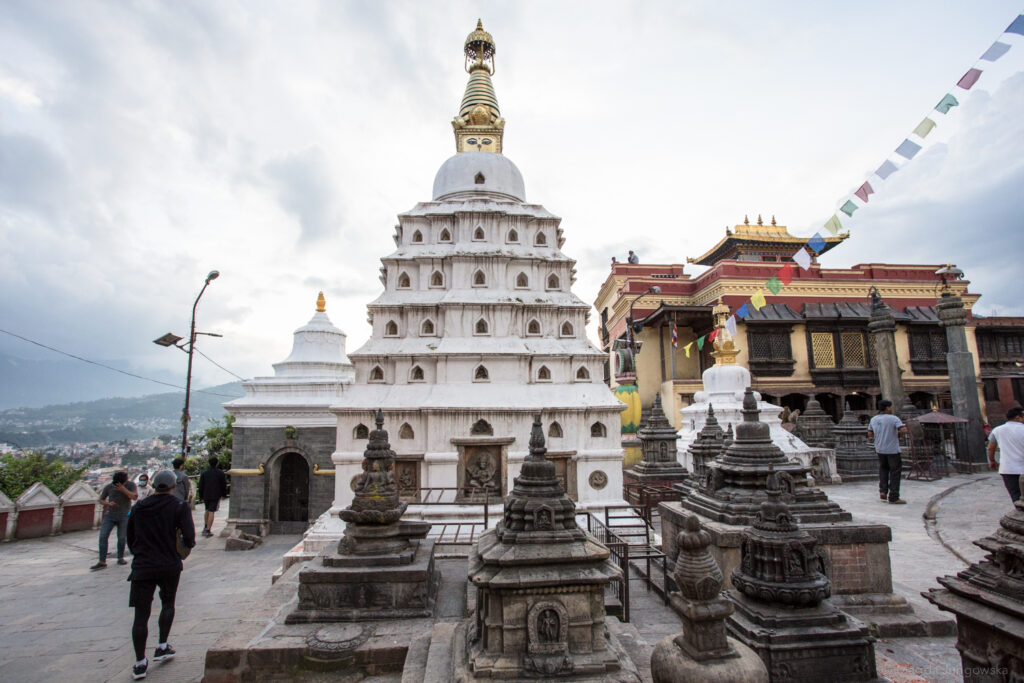
THE PLACE OF PEACE
Atop Swoyambhu Hill is another small, fascinating, but legendary place. The name of the temple is Shantipur, the Place of Peace. Inside the temple is believed to be a secret, always locked, underground chamber lives the 8th century Tantric, Master Shantikar Acharya. Practicing meditation techniques that have preserved his life for centuries, he is a great esoteric magician who has complete power over the weather.
When the valley of Kathmandu has a threat of drought, the King of Nepal must enter the underground chamber to get the secret mandala from Shantikar. Soon after the mandala is brought outside and shown to the sky, it will start raining. Frescoes were painted on the walls inside the temple, depicting when this last occurred in 1658. The small temple has a powerful atmosphere; it is mysterious, stern, and slightly ominous.
CONCLUSION
For the followers of Buddhism, there is no doubt about the importance of the Swoyambhu chaitya. For them, it is the most sacred shrine, the root point of their religion.
The Stupa resides a mile west of Kathmandu on top of a hillock. Beyond the borders imposed by locality and caste, all Buddhists accept Svayambhu¯ as the center of their religion. Notably, during the month of gunl¯a parba, which coincides largely with August, many thousands of devotees from Kathmandu and its surroundings get up every morning well before sunrise. They ascend the steep staircase leading up the hillock from the east and venerate Swoyambhu Stupa and the ancillary shrines before returning home two hours later.
The historical beginnings of the Swoyambhu Chaitya are obscure. There are no sources attesting to its existence before the fifth century CE. What is more, the little evidence pointing to the presence of the Chaitya in the fifth and seventh centuries is flimsy and far from conclusive.
